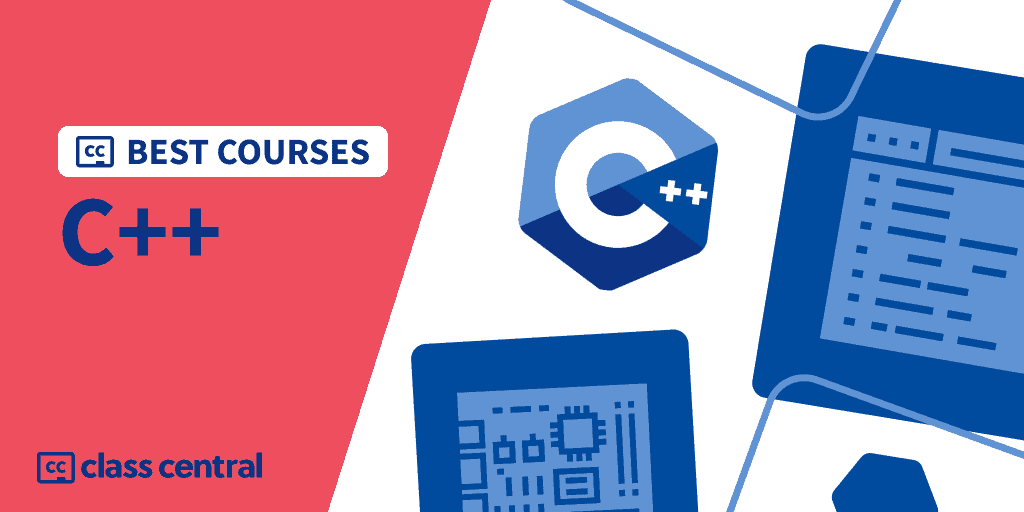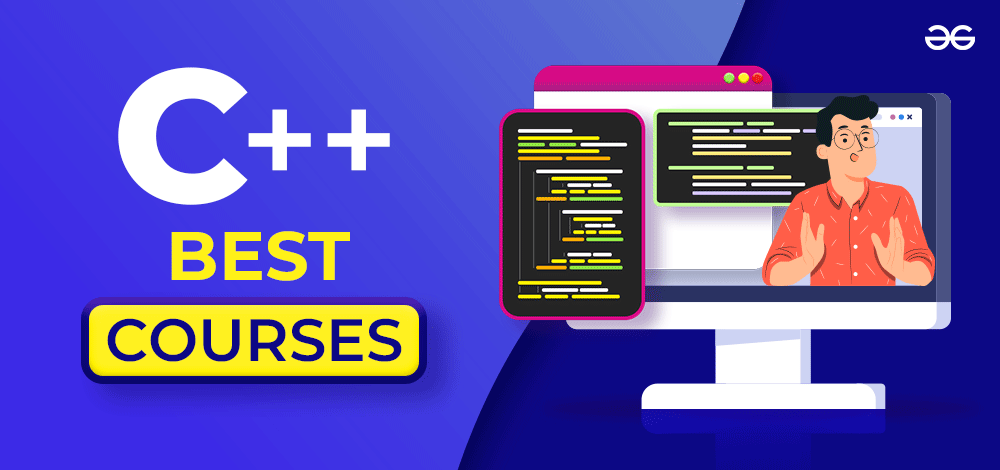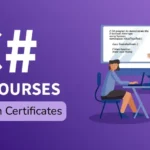My C++ Course Journey: From Zero to Code Explorer (and Why You Should Join Me!)
Remember that feeling when you look at something incredibly complex and think, "How do people do that?" For me, that feeling used to hit every time I saw lines of code. The world of programming felt like a secret society, with its own language and cryptic symbols. And then, there was C++. I’d heard whispers of its power, its speed, its legendary status in the tech world. It sounded amazing, intimidating, and completely out of my league.
But curiosity, as they say, kills the cat – or in my case, it ignited a spark. I decided it was time to stop just wondering and start learning. And that’s how my C++ course adventure began.
The Big Decision: Why C++? And Why a Course?
You might be asking, "Why C++ of all languages?" Good question! There are so many programming languages out there, some touted as ‘easier’ for beginners. But I kept hearing about C++’s fundamental nature. It’s the engine under the hood for so many things we use daily: operating systems, game engines, high-performance applications, embedded systems, and even parts of web browsers. Learning C++ isn’t just learning a language; it’s learning how computers really work at a deeper level. It builds a solid foundation that makes learning other languages much simpler later on.
Then came the second question: self-teach or take a course? I’d tried dabbling with tutorials before, but I always hit a wall. There were gaps in my understanding, no one to ask when I was stuck, and no clear path. That’s why I opted for a structured C++ course. I wanted guidance, a clear curriculum, and the chance to interact with instructors and fellow learners. It turned out to be one of the best decisions I made.
My First Steps: "Hello, World!" and Beyond
Walking into that first C++ course session felt like stepping into a new world. My fingers hovered over the keyboard, a mix of excitement and apprehension swirling inside me. Our instructor, a patient and knowledgeable guide, started us with the absolute basics.
"Today, we’re going to make the computer say ‘Hello, World!’" he announced. Simple, right? But seeing those few lines of code compile and then seeing "Hello, World!" appear on my screen felt like magic. It was a tiny victory, but a victory nonetheless.
The initial days were about getting comfortable with the syntax. It felt like learning a foreign alphabet, then forming basic sentences. We learned about variables – those little labeled boxes in the computer’s memory where we store information. We explored data types: integers for whole numbers, floats for decimals, characters for letters. It was like organizing a digital pantry!
Unraveling the Mysteries: From Logic to Objects
As the course progressed, we moved past the very simple stuff and into the core concepts that truly give you control.
Bringing Logic to Life: If/Else and Loops
This was where things started to get really interesting. We learned about if and else statements – telling the computer, "If this condition is true, do this; otherwise, do that." It felt like giving the computer a brain, allowing it to make decisions.
Then came loops: for loops, while loops. These let us tell the computer, "Repeat this action X number of times," or "Keep doing this until a certain condition is met." Suddenly, I wasn’t just giving single instructions; I was orchestrating a sequence of actions, creating small, automated processes. The satisfaction of writing a loop that calculated a series of numbers was immense!
Breaking Down Problems with Functions
One of the early lessons was the importance of breaking down big problems into smaller, manageable chunks. This is where functions came in. Instead of writing one giant block of code, we learned to create functions – self-contained units that perform a specific task. Want to calculate the area of a circle? Write a function for it. Need to display a menu? Another function! This made our code cleaner, easier to understand, and much simpler to debug.
The Infamous Pointers: Not So Scary After All!
Ah, pointers. Before the course, I’d heard whispers of how terrifying pointers were in C++. They were supposedly the bane of every beginner’s existence. And yes, they required a bit more focus. Pointers are essentially variables that store memory addresses, allowing you to directly interact with the computer’s memory.
Our instructor used great analogies – think of it like knowing the house number (memory address) instead of just the person’s name (variable name). Once I understood why they were used (for efficiency, direct memory access, working with data structures), and practiced with them, the "fear factor" dissolved. It was like learning to drive stick shift – a bit tricky at first, but incredibly empowering once you get it.
Building Worlds with Object-Oriented Programming (OOP)
This was a game-changer. Object-Oriented Programming, or OOP, is a way of structuring your code to mimic the real world. We learned about:
- Classes: These are like blueprints. Think of a "Car" class – it defines what a car is (has wheels, an engine, a color) and what it can do (accelerate, brake, turn).
- Objects: These are the actual things created from the blueprint. My red Honda is an object of the "Car" class. Your blue Ford is another.
- Inheritance: How one class can inherit properties and behaviors from another. A "SportsCar" class might inherit from the "Car" class, adding its own unique features like a spoiler or turbo boost.
- Polymorphism: The ability for objects of different classes to be treated as objects of a common type. It sounds complex, but it simply means that different types of cars can all "accelerate," even if they do it in slightly different ways.
OOP made writing larger programs much more organized and intuitive. It felt like I was building with Lego blocks, creating reusable components that fit together.
Memory Management: With Great Power…
C++ gives you a lot of control, including direct memory management. This means you have to tell the computer when you need memory (new) and, importantly, when you’re done with it so it can be reused (delete). Our course really emphasized the responsibility that comes with this power. Forgetting to delete memory can lead to "memory leaks" – like leaving a tap running, slowly draining resources. Learning this made me appreciate the efficiency and precision C++ offers.
Data Structures and Algorithms: Tools for Efficiency
Towards the end of the course, we touched upon data structures (like arrays, linked lists, vectors) and algorithms. These are the tools and recipes for storing and manipulating data efficiently. Learning about them wasn’t just academic; it showed me how to write code that isn’t just correct, but also fast and resource-friendly.
The "Aha!" Moments and the Debugging Blues
It wasn’t always smooth sailing. There were times I’d stare at my screen, completely baffled by an error message. The dreaded "segmentation fault" or a tricky logical bug could lead to hours of head-scratching. But this is where the course truly shone. Our instructor was there to guide us, teaching us how to debug – how to read error messages, step through our code, and systematically find the problem.
And then, that moment! The sudden "Aha!" when you finally understand why your code wasn’t working, fix it, and it runs perfectly. That rush of adrenaline, that feeling of solving a puzzle – it’s incredibly rewarding. Each bug fixed felt like leveling up in a game.
Beyond the Classroom: What I Can Do Now
Finishing the C++ course wasn’t the end; it was just the beginning. I now have a solid understanding of a powerful and versatile language. I can look at complex programming problems and feel confident in my ability to approach them. The course opened my eyes to the vast possibilities:
- Game Development: Many major game engines and games are built with C++. My dream of creating a small game now feels achievable.
- Embedded Systems: Think smart devices, IoT, automotive software. C++ is often the language of choice due to its performance and direct hardware access.
- High-Performance Computing: For tasks requiring extreme speed, like financial modeling or scientific simulations, C++ is king.
- System Programming: Understanding operating systems and how software interacts with hardware.
More importantly, the problem-solving skills and logical thinking I developed are invaluable, no matter what path I choose in tech.
Is a C++ Course Right for You?
If my journey sounds intriguing, you might be wondering if a C++ course is for you. I’d say yes, if:
- You’re a beginner looking for a solid foundation: C++ teaches you core programming concepts that are transferable to almost any language.
- You’re intimidated by self-learning: A structured course provides the guidance, accountability, and support system you need.
- You want to understand computing at a deeper level: C++ takes you closer to the machine.
- You’re interested in performance-critical applications: Games, operating systems, real-time systems – C++ is your friend.
- You want to future-proof your skills: C++ has been around for decades and isn’t going anywhere.
Taking that C++ course was more than just learning a programming language. It was about challenging myself, developing new ways of thinking, and opening doors to an exciting new world. If you’ve ever felt that spark of curiosity about how technology works, or dreamed of building something incredible, I highly encourage you to take that leap.
Your own C++ adventure awaits!



